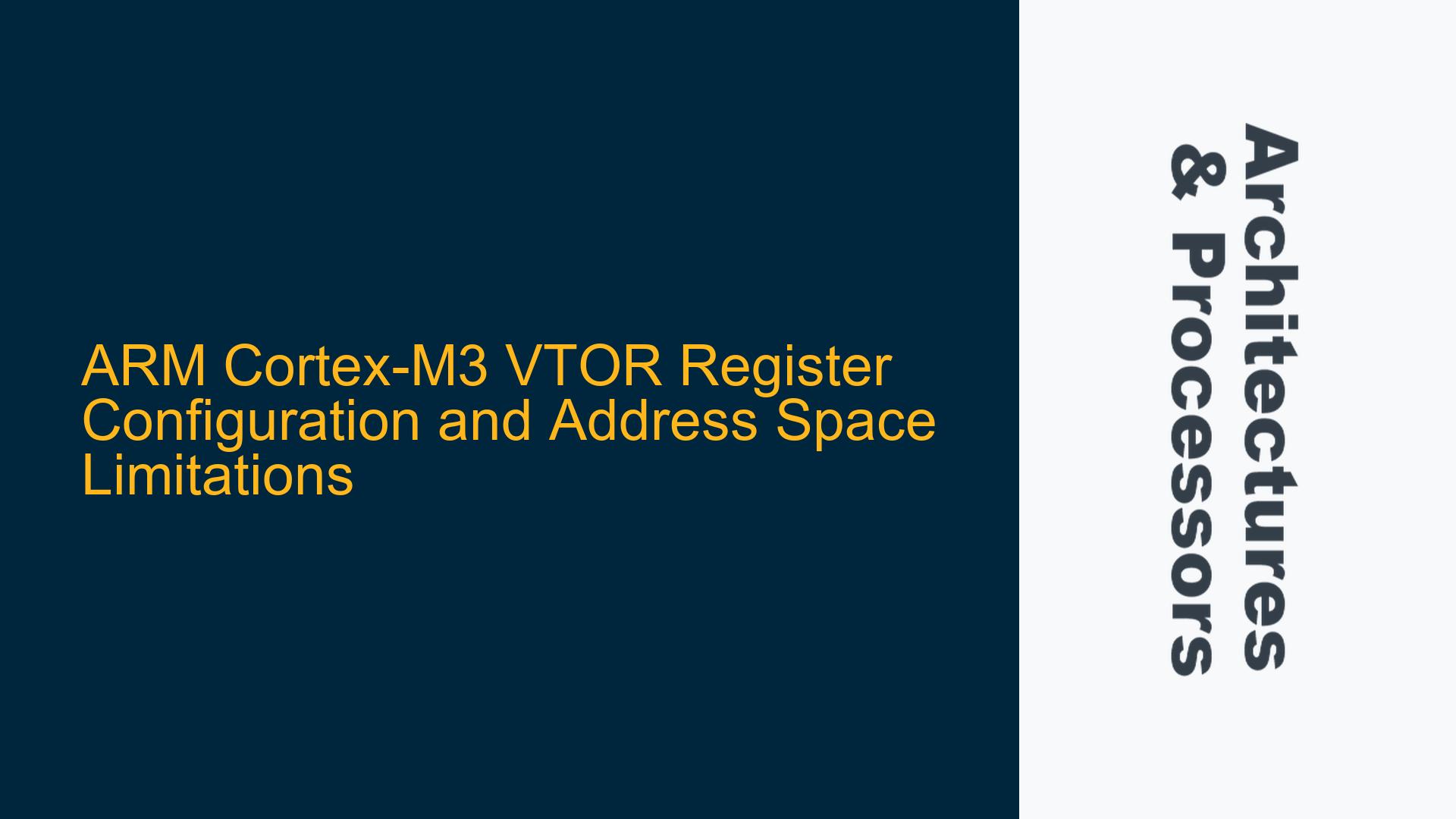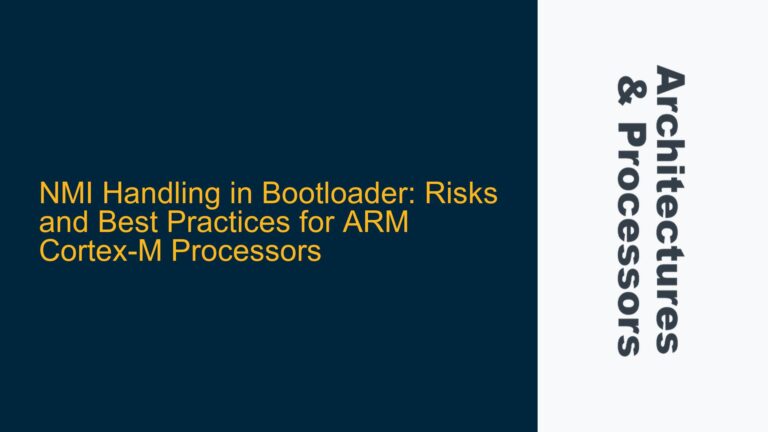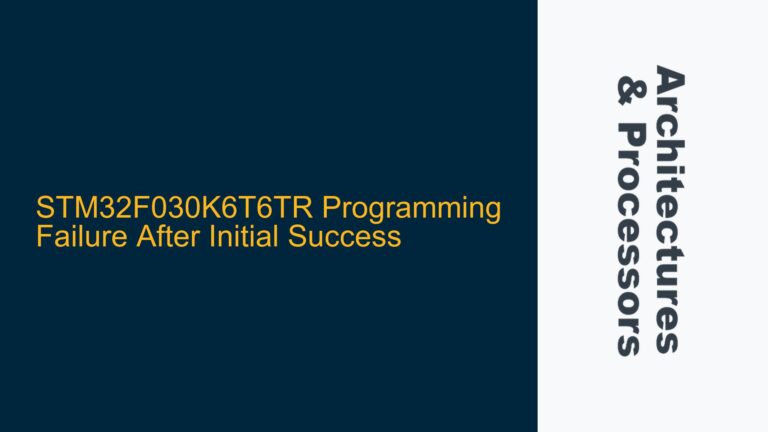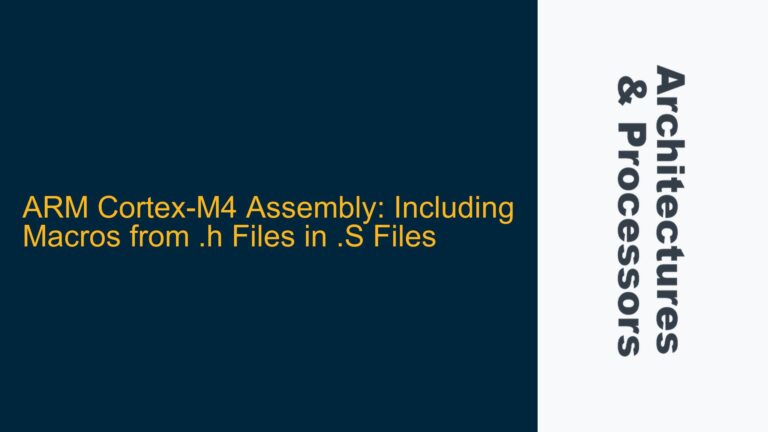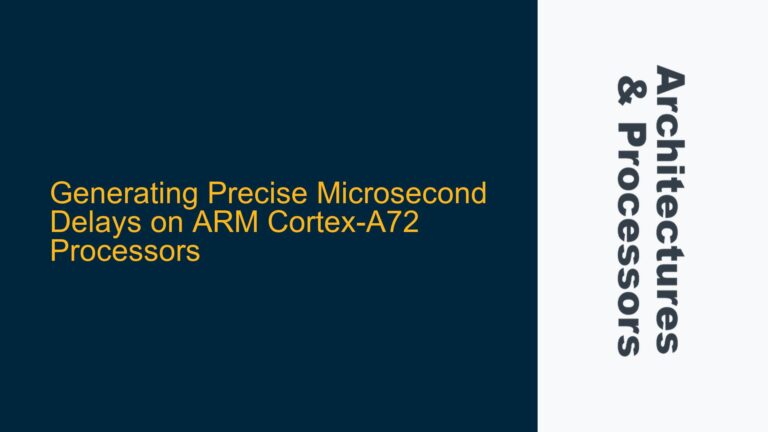VTOR Register Configuration and Address Space Constraints in ARM Cortex-M3
The Vector Table Offset Register (VTOR) in the ARM Cortex-M3 processor is a critical component for managing the vector table’s location in memory. The vector table contains the initial stack pointer value and the addresses of exception and interrupt handlers. By default, the vector table is located at address 0x00000000, but the VTOR register allows developers to relocate it to a different memory address. This flexibility is particularly useful in systems with multiple firmware images, bootloaders, or complex memory maps.
However, the VTOR register’s configuration is subject to specific architectural constraints, particularly regarding the address space it can reference. The VTOR register’s TBLOFF (Table Offset) field is defined by bits 28:7, which theoretically allows for a 32-bit address range. However, bits 31:30 are marked as reserved, which raises questions about the valid address range for the vector table. In the case of the SmartFusion chip with a Cortex-M3 core, the user attempted to set the VTOR register to 0x88000000, which seemingly worked despite the reserved bits.
This behavior suggests that the Cortex-M3 implementation in the SmartFusion chip may handle the VTOR register differently than the architectural documentation implies. To understand this discrepancy, it is essential to delve into the VTOR register’s design, the Cortex-M3 memory map, and the specific behavior of the SmartFusion chip.
Reserved Bits in VTOR and Their Impact on Address Space
The VTOR register’s reserved bits (31:30) are a source of confusion for developers working with the Cortex-M3 architecture. According to the ARM Cortex-M3 Technical Reference Manual, these bits are not used and should be written as zero. However, the behavior observed in the SmartFusion chip indicates that these bits might be ignored or repurposed in certain implementations.
When the VTOR register is set to 0x88000000, the upper two bits (31:30) are non-zero, which should theoretically be invalid. However, the Cortex-M3 core in the SmartFusion chip appears to accept this value and correctly relocates the vector table to the specified address. This suggests that the reserved bits are either ignored or treated as part of the address calculation in this specific implementation.
This behavior can be attributed to the following possibilities:
- The SmartFusion chip’s Cortex-M3 implementation does not enforce the reserved bits’ constraints, allowing the full 32-bit address range to be used for the vector table.
- The reserved bits are repurposed for chip-specific functionality, such as memory region selection or security features.
- The VTOR register’s behavior is influenced by the chip’s memory controller or other system-level components, which override the architectural constraints.
Understanding the exact cause requires a detailed analysis of the SmartFusion chip’s documentation and the Cortex-M3 core’s integration within the chip. However, the observed behavior highlights the importance of considering both architectural specifications and chip-specific implementations when working with embedded systems.
Validating VTOR Configuration and Ensuring Correct Vector Table Relocation
To ensure that the VTOR register is configured correctly and the vector table is relocated as intended, developers must follow a systematic approach. This involves verifying the VTOR register’s value, confirming the vector table’s location in memory, and testing the system’s behavior under various conditions.
First, the VTOR register’s value should be checked after writing to it. This can be done by reading the register back and comparing it to the intended value. If the reserved bits are ignored or repurposed, the read value may differ from the written value, but the effective address should still point to the correct location.
Second, the vector table’s contents should be verified at the new address. This involves checking that the initial stack pointer value and the exception handler addresses are correctly placed in memory. Tools such as debuggers and memory inspectors can be used to confirm the vector table’s location and contents.
Third, the system’s behavior should be tested by triggering exceptions and interrupts. This ensures that the Cortex-M3 core correctly fetches the exception handlers from the relocated vector table. If the system operates as expected, the VTOR configuration can be considered valid.
In the case of the SmartFusion chip, the successful relocation of the vector table to 0x88000000 indicates that the VTOR register’s configuration is functional. However, developers should be cautious when relying on behavior that deviates from the architectural documentation, as it may not be consistent across different implementations or future revisions of the chip.
Addressing Potential Issues with VTOR Configuration
While the VTOR register’s flexibility is beneficial, improper configuration can lead to system instability or failure. Common issues include incorrect address alignment, invalid memory regions, and conflicts with other system components.
The vector table must be aligned to a boundary that matches the number of exceptions supported by the Cortex-M3 core. For example, if the core supports 240 exceptions, the vector table must be aligned to a 1 KB boundary. Misalignment can cause the core to fetch incorrect exception handlers, leading to undefined behavior.
Additionally, the vector table must be located in a memory region that is accessible to the Cortex-M3 core. Attempting to relocate the vector table to an invalid or protected memory region can result in bus faults or other errors. Developers must ensure that the target address is within a valid memory range and that the memory is configured correctly in the system’s memory map.
Finally, conflicts with other system components, such as memory-mapped peripherals or DMA controllers, must be avoided. The vector table’s new location should not overlap with other critical data structures or hardware registers. Careful planning and testing are required to ensure that the VTOR configuration does not interfere with the system’s operation.
Best Practices for VTOR Configuration in Cortex-M3 Systems
To minimize the risk of issues and ensure reliable operation, developers should follow best practices when configuring the VTOR register in Cortex-M3 systems. These practices include adhering to architectural guidelines, validating the configuration, and documenting the system’s memory map.
First, developers should adhere to the architectural guidelines for the VTOR register, including writing zero to the reserved bits and ensuring proper address alignment. While some implementations may tolerate deviations from these guidelines, following them ensures compatibility across different Cortex-M3-based systems.
Second, the VTOR configuration should be validated through thorough testing. This includes verifying the vector table’s location and contents, testing exception and interrupt handling, and checking for conflicts with other system components. Automated tests and debugging tools can help identify and resolve issues early in the development process.
Third, the system’s memory map should be documented clearly, including the vector table’s location and any constraints or considerations related to the VTOR configuration. This documentation is essential for maintaining and troubleshooting the system, especially when working with complex or multi-firmware configurations.
By following these best practices, developers can leverage the VTOR register’s flexibility while minimizing the risk of issues and ensuring reliable operation in Cortex-M3-based systems.
Conclusion
The VTOR register in the ARM Cortex-M3 processor provides valuable flexibility for relocating the vector table, but its configuration requires careful consideration of architectural constraints and system-specific behavior. The observed behavior in the SmartFusion chip, where the VTOR register accepts a value with non-zero reserved bits, highlights the importance of understanding both the architecture and the implementation.
Developers must validate the VTOR configuration, ensure proper address alignment, and avoid conflicts with other system components. By following best practices and thoroughly testing the system, developers can leverage the VTOR register’s capabilities to create robust and reliable embedded systems.
In summary, the VTOR register’s configuration in the Cortex-M3 architecture is a powerful tool, but it requires a deep understanding of the architecture, the specific implementation, and the system’s memory map. With careful planning and testing, developers can successfully relocate the vector table and ensure the system’s stability and performance.
